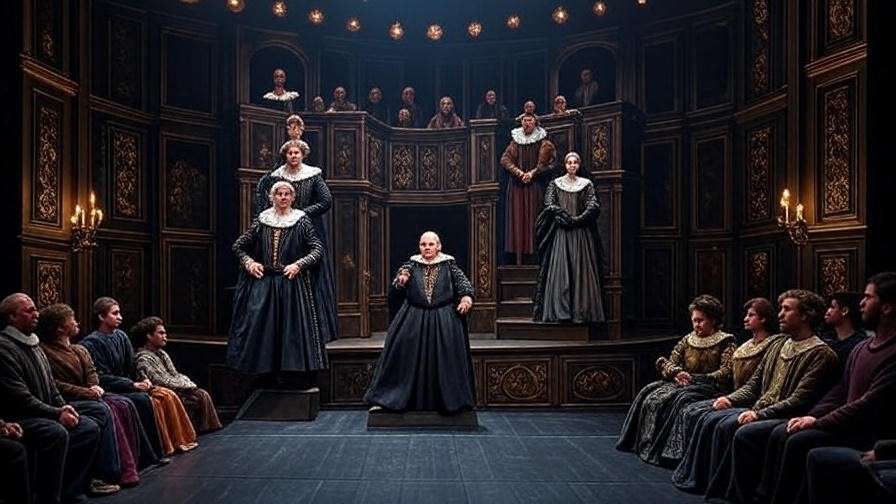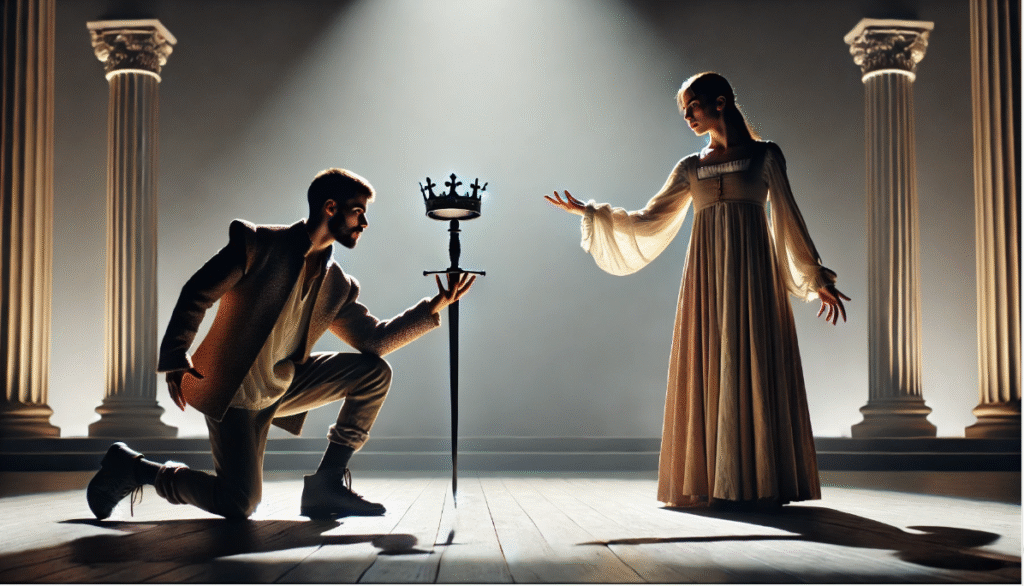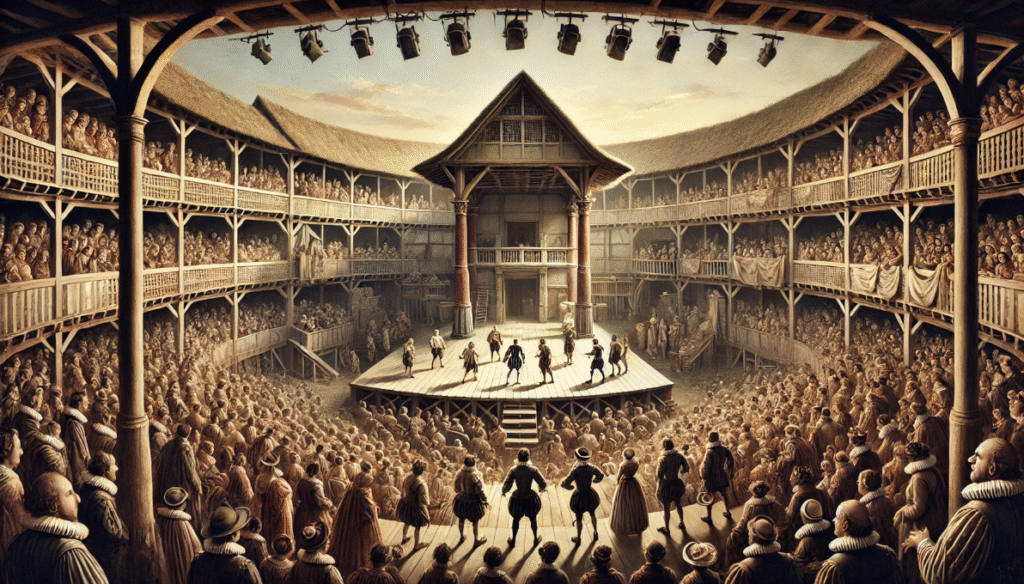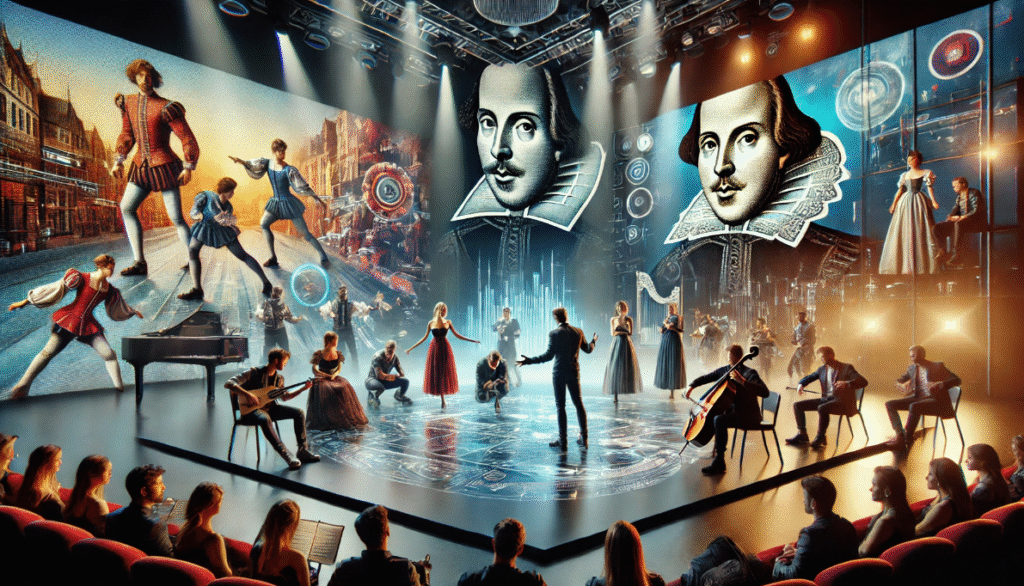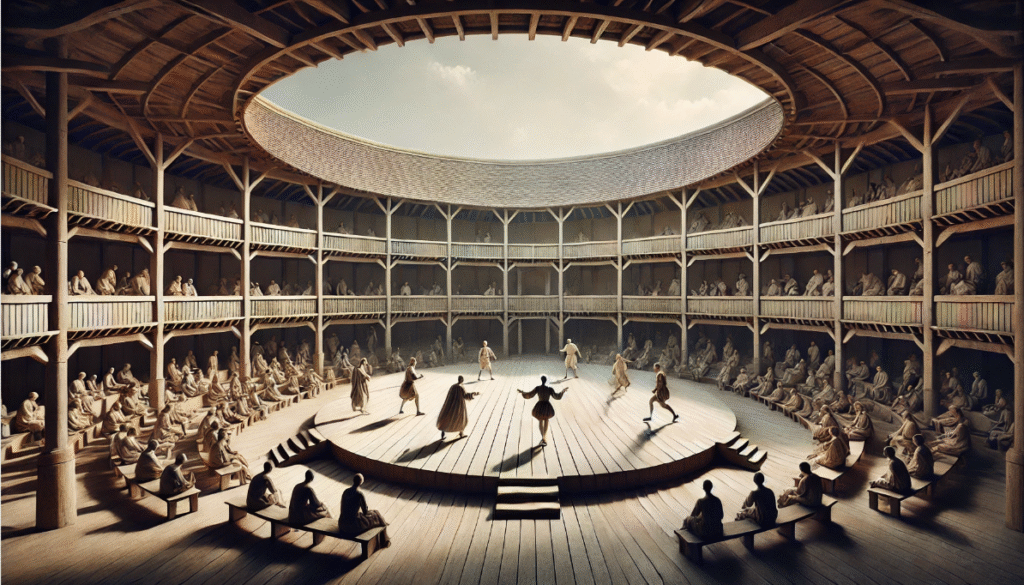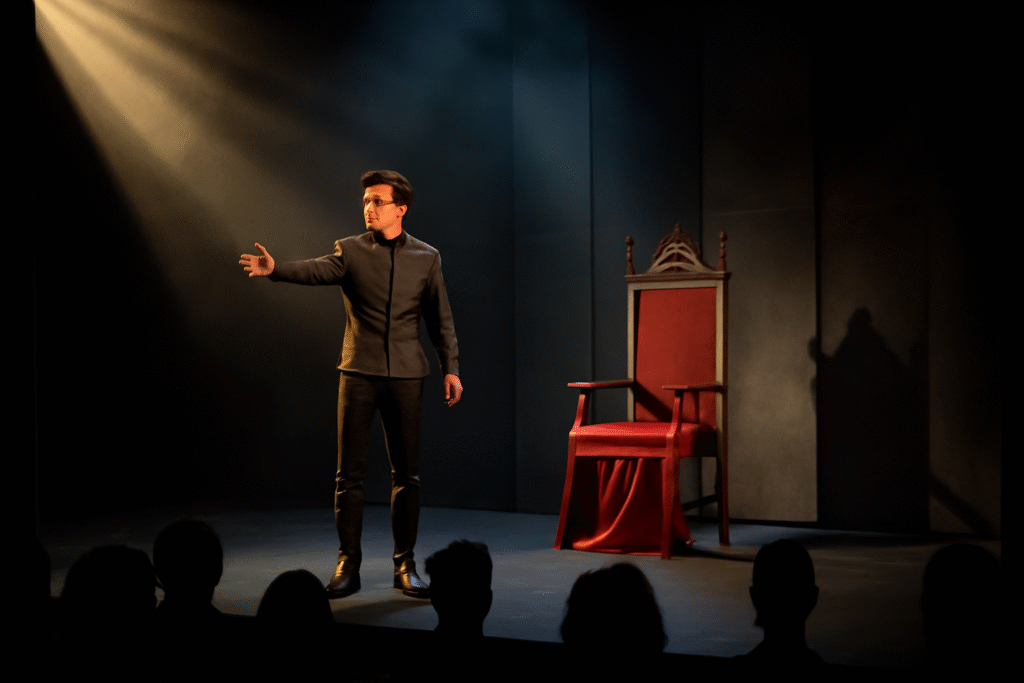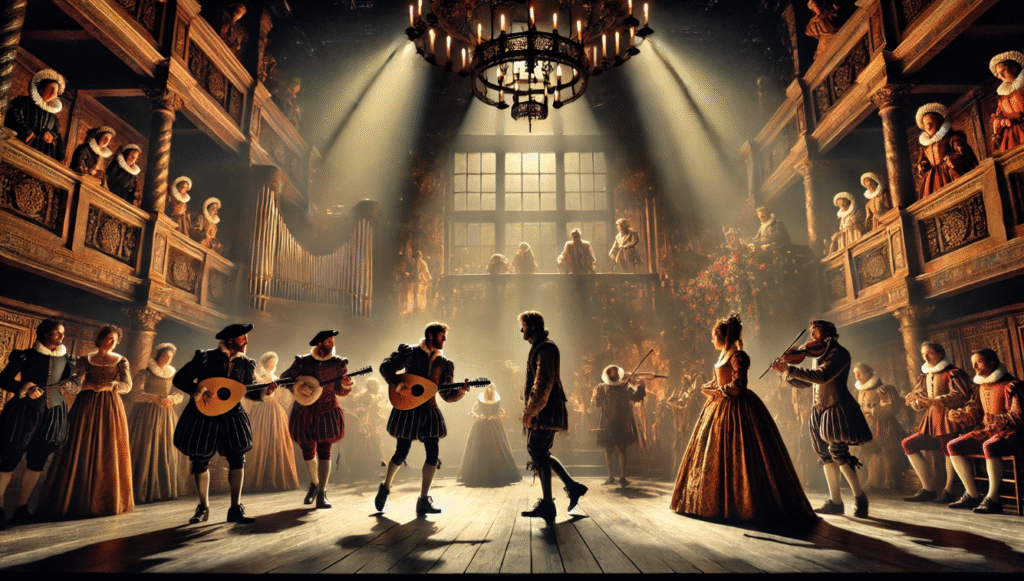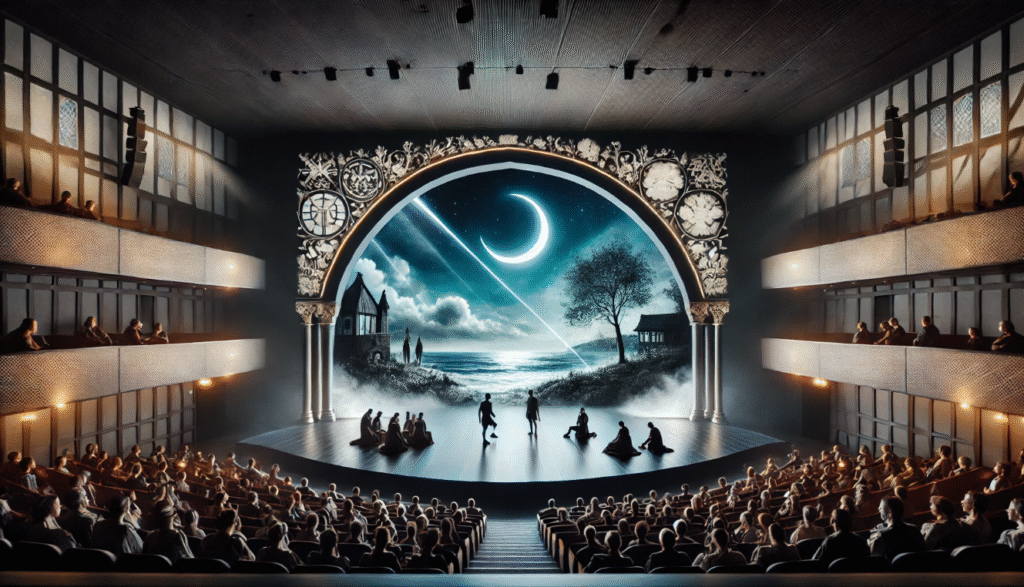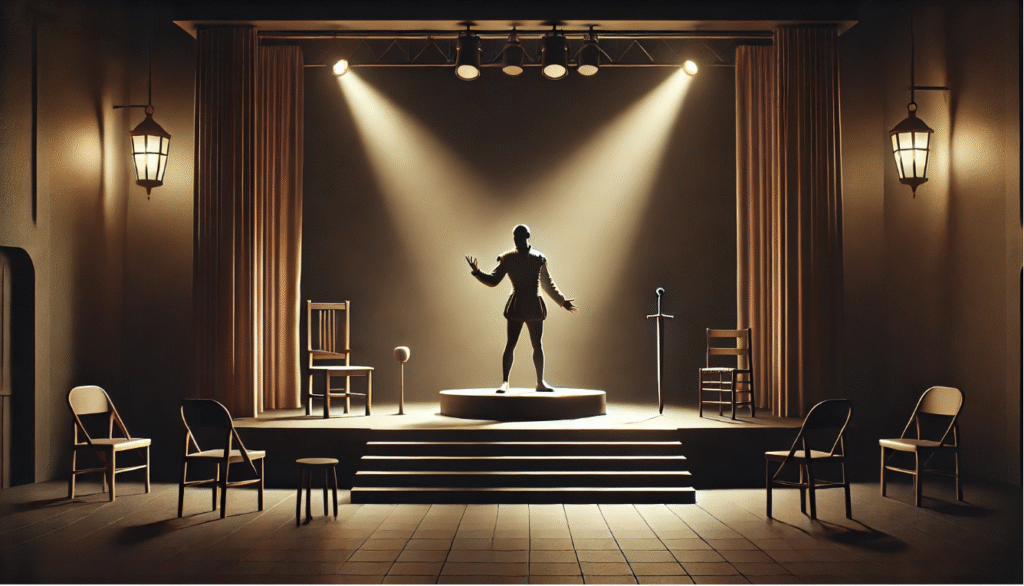Picture a stage where a single skull conjures a kingdom’s tragedy, or a few well-chosen words transform a bare platform into a stormy heath. This is the magic of Shakespearean stagecraft, a cornerstone of theatrical innovation that continues to influence set decoration in modern theater. In an era of dazzling technology and lavish productions, the influence of Shakespearean stagecraft on set decoration offers timeless lessons for creating immersive, cost-effective, and emotionally resonant designs. For theater directors, set designers, and enthusiasts, understanding these techniques unlocks creative solutions to modern staging challenges, blending minimalism with imagination to captivate audiences.
This article explores how Shakespeare’s minimalist approach—born from the constraints of the Elizabethan stage—shapes contemporary set decoration. By examining historical techniques, modern applications, and practical strategies, we’ll uncover how theater professionals can harness these principles to craft unforgettable productions, even on tight budgets. Whether you’re designing for a community theater or a Broadway stage, Shakespeare’s legacy proves that creativity, not resources, defines great theater.
Understanding Shakespearean Stagecraft
The Elizabethan Stage: A Minimalist Marvel
In Shakespeare’s time, theaters like the Globe were architectural marvels with severe limitations. These open-air venues, built in the late 16th and early 17th centuries, lacked modern lighting, mechanized sets, or elaborate backdrops. The stage was a simple platform, often thrust into the audience, with a trapdoor, a balcony, and a small “discovery space” for dramatic reveals. Performances relied on daylight, meaning no control over ambiance, and sets were sparse, often just a table or a throne.
This minimalism forced Shakespeare and his contemporaries to rely on the audience’s imagination. A single prop or a vivid line of dialogue could evoke an entire setting. For example, in Macbeth, the witches’ heath is conjured through eerie language and minimal staging, not elaborate scenery. This approach wasn’t just practical—it was a deliberate artistic choice that prioritized storytelling over spectacle.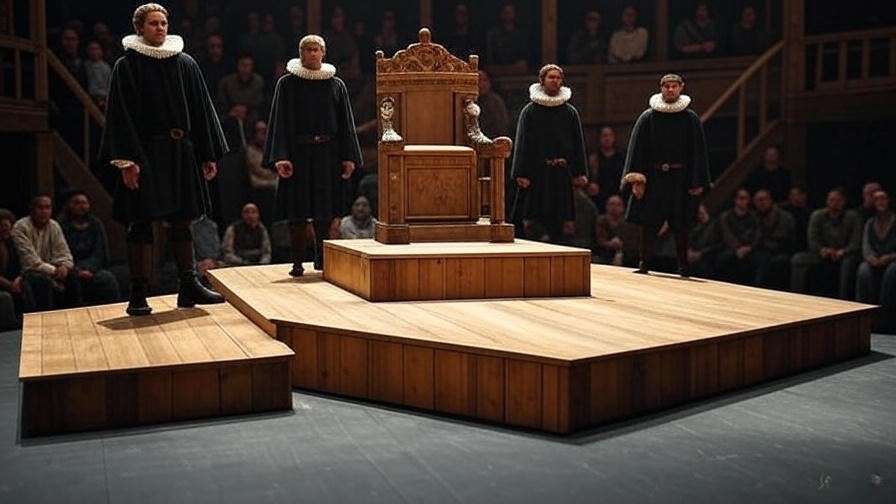
Key Elements of Shakespearean Stagecraft
Shakespeare’s stagecraft was a masterclass in resourcefulness. Several techniques defined his approach:
- Language as Scenery: Shakespeare used rich, descriptive dialogue to paint settings. In A Midsummer Night’s Dream, the forest comes alive through poetic imagery, not physical trees.
- Symbolic Props: A single item could carry profound meaning. In Hamlet, Yorick’s skull symbolizes mortality, requiring no additional set pieces.
- Flexible Stage Configurations: Trapdoors, balconies, and thrust stages allowed dynamic scene changes. Actors entering through a trapdoor could signify a ghostly appearance, as in Hamlet.
- Costuming as Storytelling: Costumes indicated character, status, and setting. A king’s robe or a soldier’s armor instantly set the scene without elaborate backdrops.
These elements made Shakespeare’s productions adaptable to various venues, from the Globe to royal courts, a flexibility that resonates with modern theater’s need for versatility.
Why Shakespeare’s Approach Was Revolutionary
Before Shakespeare, medieval theater relied on static “mansions” (fixed stage structures) to represent locations, limiting creativity. Early Renaissance theater began experimenting with perspective scenery, but it was costly and rigid. Shakespeare’s innovation was to break free from physical constraints, using language, props, and actor movement to create fluid, imaginative worlds. As theater historian Dr. Farah Karim-Cooper notes, “Shakespeare’s stagecraft turned the audience into co-creators, relying on their imagination to complete the scene.”
This shift was revolutionary because it democratized theater. Productions didn’t require vast resources, making them accessible to diverse audiences and venues. Today, this approach inspires set designers to prioritize creativity over budget.
The Evolution of Set Decoration in Theater
From Elizabethan Simplicity to Modern Complexity
Theater design has evolved dramatically since Shakespeare’s time. The 19th century introduced proscenium stages, which separated actors from audiences and allowed for intricate backdrops. Innovations like gas lighting, and later electric lighting, enabled precise control over mood and atmosphere. The rise of realism and naturalism demanded detailed sets that mimicked real life, as seen in the works of Henrik Ibsen or Anton Chekhov.
Yet, Shakespeare’s minimalist influence persists, particularly in experimental and fringe theater. Productions like Tom Stoppard’s Rosencrantz and Guildenstern Are Dead use bare stages to echo Elizabethan simplicity, focusing on dialogue and actor interplay. Even large-scale productions draw on Shakespeare’s principles when budgets or artistic vision call for restraint.
Modern Set Decoration Challenges
Today’s set designers face unique pressures:
- Budget Constraints: Community theaters and small companies often lack funds for elaborate sets.
- Audience Expectations: Modern audiences, accustomed to cinematic visuals, expect immersive experiences.
- Sustainability: Environmental concerns push designers toward eco-friendly materials and reusable sets.
- Versatility: Multi-scene plays require quick, seamless transitions, a challenge Shakespeare’s flexible staging addressed.
Shakespearean stagecraft offers solutions to these issues, emphasizing creativity and adaptability over resource-heavy designs.
Core Influences of Shakespearean Stagecraft on Modern Set Decoration
Minimalism as a Design Philosophy
Shakespeare’s minimalist approach remains a guiding principle for modern set designers. By using sparse elements strategically, designers can create powerful visuals without overwhelming the audience. For instance, a 2018 National Theatre production of Macbeth used a stark, industrial set with minimal props—a nod to Shakespeare’s reliance on suggestion over spectacle.
Tip for Designers: Focus on one or two key elements per scene. A single chair, lit dramatically, can evoke a throne room more effectively than a cluttered set.
Symbolic and Multifunctional Props
Shakespeare’s use of symbolic props inspires modern designers to imbue objects with meaning. In Othello, the handkerchief is a pivotal plot device, symbolizing trust and betrayal. Modern productions, like Samuel Beckett’s Waiting for Godot, use similar techniques—a barren tree becomes a symbol of existential despair.
Case Study: In a 2023 Royal Shakespeare Company production of Hamlet, a single table served as a dining hall, a council chamber, and a grave, showcasing how multifunctional props can streamline set changes while deepening thematic resonance.
Engaging the Audience’s Imagination
Shakespeare’s stagecraft relied on audiences to “piece out our imperfections with your thoughts” (Henry V). Modern immersive theater, like Punch drunk’s Sleep No More, draws heavily on this principle. By using suggestive sets and atmospheric sound, designers invite audiences to co-create the world.
Expert Insight: Set designer Es Devlin, known for her work on The Lehman Trilogy, says, “Shakespeare taught us that a stage doesn’t need to be literal. A few well-placed elements, paired with strong performances, can transport an audience anywhere.”
Flexible and Dynamic Stage Spaces
Shakespeare’s use of adaptable stages—thrust platforms, trapdoors, and balconies—influences modern modular designs. Contemporary theaters often use in-the-round or black-box setups to create intimacy and flexibility. For example, a 2021 production of A Midsummer Night’s Dream at the Globe used a rotating stage to shift between Athens and the forest, echoing Shakespeare’s dynamic staging.
Tip: For touring productions or small venues, design modular sets that can be reconfigured quickly, such as collapsible platforms or lightweight panels.
Practical Applications for Today’s Theater Professionals
Budget-Friendly Set Design Inspired by Shakespeare
Shakespeare’s stagecraft is a boon for theaters with limited budgets. His reliance on minimal props and evocative language allows modern designers to create impactful sets without breaking the bank. For instance, a community theater production of Romeo and Juliet might use a single balcony structure to represent both the iconic balcony scene and other settings, such as a city wall or a tomb entrance, saving on materials and construction costs.
Checklist for Cost-Effective Set Design:
- Identify one or two symbolic props to anchor each scene.
- Use lightweight, reusable materials like fabric or modular panels.
- Leverage lighting and sound to enhance mood without physical sets.
- Train actors to use movement and dialogue to suggest locations.
Example: A 2022 community theater production of The Tempest used a single sail-like fabric to represent a ship, an island, and a magical veil, demonstrating how Shakespearean minimalism can stretch a small budget.
Adapting Shakespearean Techniques for Modern Genres
Shakespeare’s techniques aren’t limited to his own plays. They can enhance modern genres, from musicals to experimental works. For example, the Tony Award-winning musical Hadestown uses a sparse, industrial set with a single rotating platform, reminiscent of Shakespeare’s flexible staging, to transition between the underworld and the surface world. This approach keeps the focus on the story and music while maintaining visual intrigue.
Case Study: In a 2024 off-Broadway production of Antigone, the set consisted of a single stone slab that served as a throne, a grave, and a battlefield. This multifunctional design, inspired by Shakespeare’s use of symbolic props, allowed seamless scene transitions and deepened the play’s themes of power and mortality.
Sustainability in Set Decoration
As theaters face pressure to adopt eco-friendly practices, Shakespeare’s low-resource approach offers a blueprint for sustainable design. His productions used minimal materials, relying on reusable props and natural lighting. Modern designers can adopt similar principles by using recycled or biodegradable materials and designing sets that can be repurposed across multiple productions.
Tips for Sustainable Set Design:
- Opt for reclaimed wood, fabric, or metal for set construction.
- Design modular sets that can be disassembled and reused.
- Use digital projections to replace physical backdrops, reducing material waste.
- Partner with local recycling programs to source materials.
Expert Insight: Sustainable theater advocate Dr. Lisa Woynarski notes, “Shakespeare’s stagecraft reminds us that we don’t need excess to create impact. Sustainable design is about ingenuity, not resources.”
Challenges and Criticisms of Shakespearean-Inspired Set Decoration
Limitations of Minimalism in Modern Contexts
While Shakespearean minimalism is powerful, it can clash with modern audience expectations. Blockbuster productions like The Lion King rely on elaborate visuals to compete with film and television. Minimalist sets risk appearing underwhelming in large theaters where audiences expect spectacle. Designers must balance simplicity with enough visual flair to maintain engagement.
For example, a 2019 production of King Lear faced criticism for its overly sparse set, which some viewers found disengaging compared to the play’s emotional intensity. To counter this, designers can incorporate subtle technological enhancements, like dynamic lighting or soundscapes, to amplify minimal sets.
Overcoming Resistance to “Old-Fashioned” Techniques
Some directors and producers view Shakespearean techniques as outdated, preferring high-tech solutions like LED screens or hydraulic stages. To overcome this resistance, designers must demonstrate how minimalist stagecraft can coexist with modern technology. For instance, projections can evoke settings in a Shakespearean spirit, using digital imagery to suggest rather than depict a scene explicitly.
Strategies for Blending Old and New:
- Use projections to create atmospheric backdrops (e.g., a stormy sky for The Tempest).
- Combine minimal props with immersive sound design to enhance mood.
- Train actors to use Shakespearean-style dialogue delivery to reinforce sparse sets.
The Future of Shakespearean Stagecraft in Set Decoration
Emerging Trends in Theater Design
The influence of Shakespearean stagecraft is evolving with technology. Augmented reality (AR) and virtual reality (VR) allow designers to create immersive worlds with minimal physical sets, echoing Shakespeare’s reliance on audience imagination. For example, a 2023 experimental production of A Midsummer Night’s Dream used AR glasses to project a digital forest, allowing actors to interact with a virtual environment while keeping the stage bare.
Looking ahead, designers may combine Shakespearean principles with AI-driven tools to create adaptive sets that respond to actor movements or audience reactions. These innovations maintain the spirit of flexibility and creativity that defined Elizabethan theater.
Educating the Next Generation of Designers
To ensure Shakespeare’s influence endures, theater programs must teach his stagecraft techniques alongside modern design practices. Courses should emphasize how to evoke settings through minimalism, use symbolic props, and engage audiences imaginatively.
Recommended Resources:
- Shakespeare’s Theatre: A History by Richard Dutton for historical context.
- The Empty Space by Peter Brook for insights on minimalist theater.
- Workshops at the Royal Shakespeare Company or Folger Shakespeare Library for hands-on training.
The influence of Shakespearean stagecraft on set decoration remains a powerful force in modern theater. By embracing minimalism, symbolic props, and audience imagination, designers can create immersive, cost-effective, and sustainable productions that resonate with contemporary audiences. Whether you’re a director working with a small budget or a designer aiming to innovate, Shakespeare’s techniques offer a timeless toolkit for crafting unforgettable theater. Experiment with these principles in your next production, and discover how a few well-chosen elements can transform a stage into a world.
FAQs
- How can modern set designers apply Shakespearean stagecraft effectively?
Focus on symbolic props, versatile stage setups, and evocative dialogue to create immersive settings with minimal resources. - What are some examples of Shakespearean-inspired set designs in recent productions?
The National Theatre’s 2018 Macbeth used a stark, industrial set, while the RSC’s 2023 Hamlet employed a multifunctional table to represent multiple settings. - Is Shakespearean stagecraft relevant for non-traditional theater spaces?
Absolutely. Its flexibility suits site-specific and immersive theater, like Punch drunk’s Sleep No More, which uses minimal sets to create atmospheric worlds. - How does Shakespearean stagecraft support sustainable theater practices?
Minimalist designs reduce material use and waste, aligning with eco-friendly practices through reusable props and modular sets.

